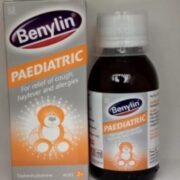Caring for Your Baby’s Feeding Utensils: What You Should Know

To protect your baby against germs and infections, it is important to ensure proper hygiene. For the first twelve months of your baby’s life, extra care must be taken in caring for their feeding utensils as their immune system is still immature and cannot handle harmful bacteria which grow quickly in milk.
Besides washing feeding utensils such as feeding bottles, teats, breast pump, bowls, spoons, teethers and other feeding accessories, these items must be sterilized to ensure they are scrupulously clean. There are four basic ways to do this:
Chemical Sterilising. This involves soaking the feeding utensils in a sterilizing solution following these three easy steps.
- Wash all the feeding utensils with hot water ensuring even the tiny parts are thoroughly washed and rinsed in clean water.
- Get a huge plastic container with a lid that can accommodate all the utensils, fill with clean water and add the sterilizing tablet or solution.
- Place all the washed feeding utensils in the solution making sure all the bottles are filled with water, then cover the container and leave for the specified time.
READ ALSO: 6 Ways to Make Bottle Feeding More Pleasant For Your Baby
Electric Steam Sterilising. This is a form of sterilizing unit especially for feeding bottles designed to use electricity.
- Wash and rinse the feeding utensils in clean water, then place them in the sterilizing unit
- Add water, taking care to follow the manufacturer’s recommendations.
- Place lid on unit and switch on; the steam destroys any bacteria present.
Microwave Steam Sterilising. This form of sterilizing requires no chemical. It is designed to kill bacteria using steam heat, however, can only sterilise items that are microwave safe. There is a unit specifically designed for this purpose.
Boiling on the Stove. This is a form of sterilizing that requires boiling. The utensils should be kept in a pot of boiling water and boiled for five minutes after which the gas should be turned off and the water allowed to cool before taking out the items. This method is safe for utensils made from plastic and metals.
SEE ALSO:Your Top 5 Baby Formula Questions Answered
Whatever sterilizing method you decide to use, after sterilizing, leave feeding utensils to drain. Avoid drying with a napkin as this can leave residues on feeding items.



This is a very important topic cos babies can easily be infected if these utensils aren’t clean. Thanks MIM
tnx mim
Great piece
Noted! Thanks for sharing.
Noted.Thanks
Thanks MIM.
Thank for sharing; I presently use no 1; since the electricity supply is erratic
Good info.. Thank you.
Thanks for sharing
Thanks mim
Thanks for the tips.
Noted